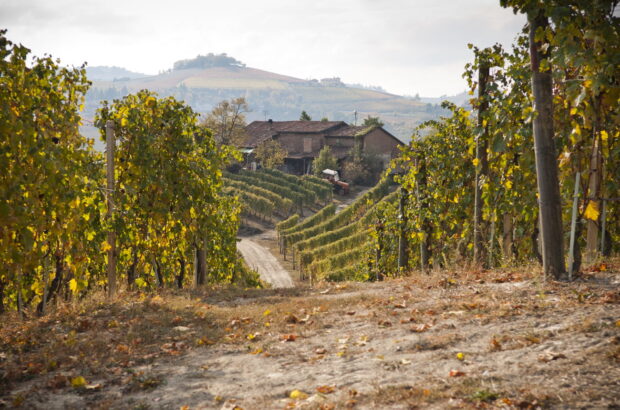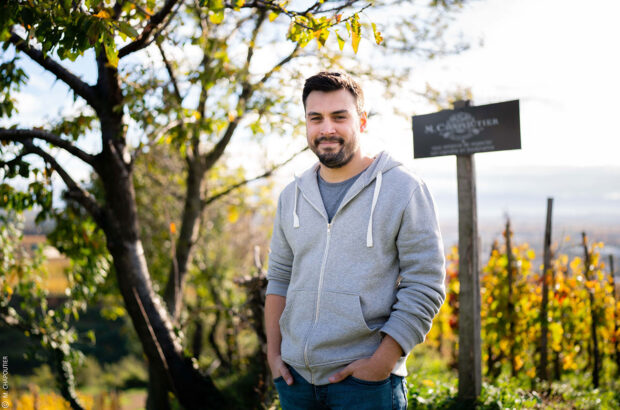Vega Sicilia 160th anniversary
Ines Salpico
It’s not often that one gets to taste multiple vintages of Vega Sicilia’s Unico, one of if not the most sought-after Spanish fine wine(s). It’s even less likely that one will have a chance to do so while dining at the National Gallery’s Spanish Room, surrounded by the works of 17th-century masters El Greco, Diego Velázquez and Francisco de Zurbarán. Vega Sicilia challenged those odds by hosting its 160th anniversary dinner, together with Berkmann Wine Cellars, at the London institution. With Philip IV of Spain’s solemn gaze upon us, CEO Pablo Alvarez and technical director Gonzalo Iturriaga guided guests through Tempos Vega Sicilia’s many projects and wines. And there was much to be seduced by beyond Velázquez’s Venus and the producer’s flagship label. The (relatively) more affordable Valbuena 5° 2019 (£111 in bond via Berry Bros & Rudd, Bordeaux Index, Jeroboams, Justerini & Brooks, Lay & Wheeler) offered a nuanced, fresh and unpretentious take on Ribera del Duero, while Alión 2020 (£61 in bond via Cru, Honest Grapes, Petersham Cellar, Philglas & Swiggot) surprised with its alluring florality and fine tannins. The evening closed with the luscious yet vibrant Oremus, Tokaji Aszú 5 Puttonyos 2017 (2014, £66.50/50cl Berry Bros & Rudd).
Armenia’s ancient tradition
Clive Pursehouse
Khachen Estate is the project of brothers Alek and Arbi Harounian. The duo make wines in the Armenian village of Aghavnadzor in the rugged region of Vayots Dzor, only a 10km drive from the site of the world’s oldest known winery, in the Areni-1 cave, which dates to 4100 BCE. Having planted own-rooted vineyards in 2019 at 1,400m in the steppe of the South Caucasus, the Harounians are focused on the cultivation of Areni Noir, the modern iteration of which is believed to share origins with the grape seeds and stems discovered in Areni-1. The grape flashes plenty of high-tone red and blue fruits and delivers robust acidity and structure to boot. Khachen Estate produces an estate wine and a reserve. Its Areni 2022 is bright and blue-fruited, with ample savoury spice and brilliant acidity, which makes it well suited for youthful drinking. From the best blocks of vines, the Reserve Areni 2021 is kept in French oak barriques, taming some of the grape’s exuberance with smoky notes of clove and spice that complement the ripe flavours of red plum, blueberries and fresh spearmint.
Il Marroneto visits Decanter
James Button

Iacopo Mori and his father Alessandro, Il Marroneto
In mid-December, Iacopo Mori of Il Marroneto in Montalcino visited Decanter’s office in Paddington, London, for a quick taste of the estate’s latest releases from the 2019 vintage, which will be available in limited quantities from the end of March via UK importer Armit (pricing unconfirmed at time of writing). I’m somewhat familiar with the wines, and my expectations were already high, especially since Decanter contributor Aldo Fiordelli earmarked the 2019 Madonna delle Grazie as one of his wines of the year, attributing it a perfect 100-point score. The standard Brunello di Montalcino 2019 of the estate is silky, precise and chiselled, with incredible sweetness and fragrance. Madonna delle Grazie 2019 – a single-vineyard selection – is darker, infused with violet and lavender and an incredible pomegranate character allied to fine, silky yet structural tannins. Given the high overall quality of 2019 in Montalcino, buyers are spoilt for choice this year – but these delicious offerings should be high on any enthusiast’s shopping list.
Mouton’s Languedoc estate
Georgie Hindle
It’s easy to be overshadowed when your sibling estate is a Bordeaux first growth, but Domaine de Baronarques, purchased by the Rothschild family in 1998, shows strong yet atypical Languedoc identities (being located at St-Polycarpe, near Limoux), with a focus on Bordeaux grape varieties. Both the first and second wine, La Capitelle, are made with a majority of Merlot, as per the Limoux appellation stipulations – the grand vin supplemented by Cabernet Franc and smaller proportions of Syrah, Cabernet Sauvignon and Malbec, and La Capitelle by varying proportions of Syrah and Malbec, depending on the vintage. Designed to be a more readily approachable style, La Capitelle 2019 is juicy and lively with a crisp and fresh mineral grip, while a mini-vertical of the grand vin revealed ageability, with 2007 from magnum outperforming the 2010 from bottle in terms of freshness. The grand vin 2014 (£43.10 Vinvm) was full of delicate fruit and salinity, 2016 (£45 Hic) was highly charged, lively and lifted with plenty of structure, while 2019 (£30.83 in bond at Berry Bros & Rudd) was fragrant, floral and softly spicy with tension and length. The 2018 white (£41-£45 Hic, Waddesdon Wine), entirely Chardonnay in this vintage, was creamy and dramatic with herbal lemon touches and mouthwatering acidity, while the 2021 white (blended with 5% Chenin Blanc) was fragrant and aromatic, fresh and so drinkable.
Pinpoint Pinot from Dawson James
Tina Gellie

Peter Dawson
The early success of Ed Carr’s House of Arras sparkling wine in the late 1990s was the impetus for fellow ex-Hardys colleagues Peter Dawson and Tim James to choose Tasmania to realise their united ambition to make ‘really good Pinot Noir’. The key to that, Dawson explained on a recent trip to London for importer Liberty Wines, is the Derwent Valley’s Meadowbank Vineyard, one of the oldest producing sites on Australia’s island state. The duo now lease 4ha of the vineyard, two-thirds of which is Pinot Noir, planted in 1989, and the rest Chardonnay (2000). ‘With 20 to 30 years of age, the vines are in a sweet spot,’ explains Dawson, ‘giving a texture to the wines we didn’t see when we started out but, thanks to the location, always intensity and ripeness at relatively low sugar levels.’ The incremental finessing of oak, tannin and structure was evident through tasting the 2015, 2017, 2018 and current-release 2020s with Dawson, particularly the Pinot Noir 2020 (£76.99 Winesquare.co.uk) with its filigree tannins, whole- bunch vibrancy and the dial cranked up loud on exotic spiced cherry and wild strawberry flavours. A cool, brooding beauty that will reward patience.












